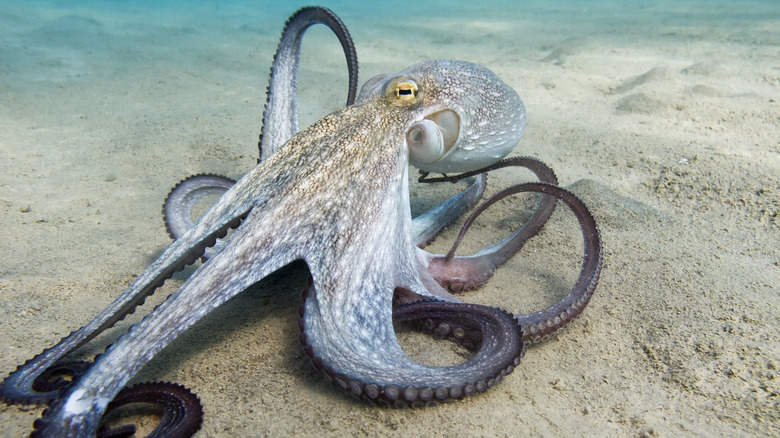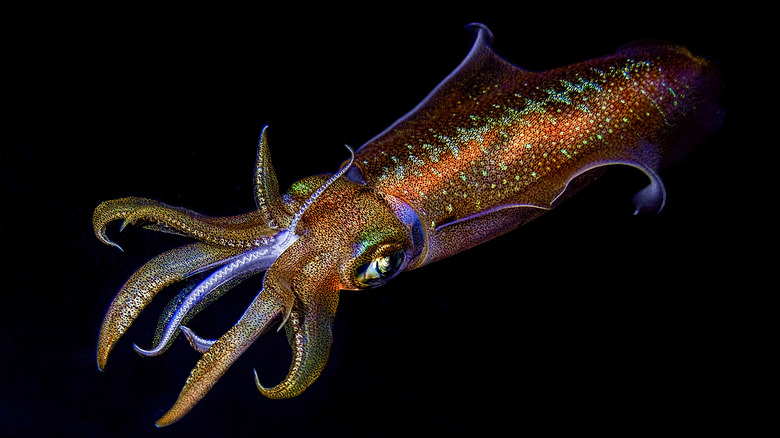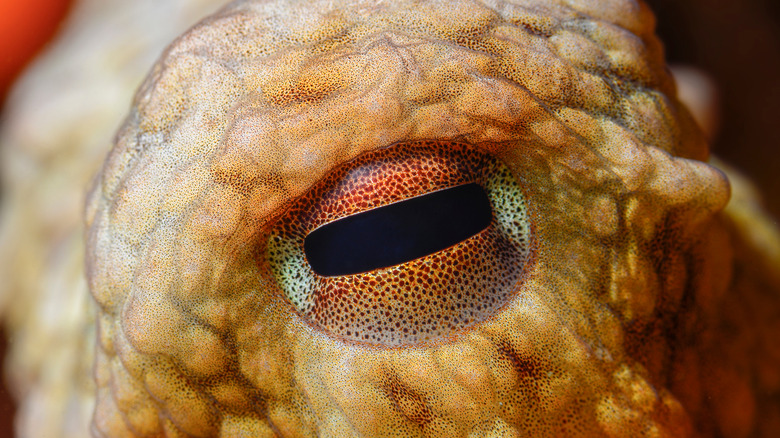This Octopus Ancestor Actually Predates The Dinosaurs
There's still plenty we don't know about the early inhabitants of our planet. Although we've got entire museums dedicated to dinosaurs and prehistoric creatures, it's hard to know exactly what was living here when we can't go back and see it for ourselves. But that doesn't mean we can't figure it out with the clues they left behind through fossils and bones, or the animals they evolved into. Every now and then, a new fossil will shed light on those times long ago, before humans were around to document everything themselves.
One fossil, in particular, is causing a stir in scientific circles for reframing our understanding of some creatures still around today, like octopodes and squids. Paleontologists believe the tiny creature, found in Montana preserved in limestone, shows our cephalopod friends have been around much longer than we ever thought they had been — and, in fact, they might have been around even before the dinosaurs.
Changing the narrative
The Syllipsimodpodi bideni doesn't look like much on its own. The fossil is a little cylindrical shape about 4.7 inches long, according to CNN, with ten arms that have the trademark "suckers" you can see on basically any octopus today. The fossil shows what's likely an ink sac, where it hid ink to scare off predators (via All That's Interesting). But the fossil is pretty impressive despite its size, according to The Washington Post, because the creature was primarily made of soft tissue-like muscle, which doesn't fossilize as easily as harder tissues like bone.
The fossil isn't a new discovery. It was donated to the Royal Ontario Museum in 1988, according to The Washington Post, but it took until now for someone to look at it and propose that it might represent an entirely new species. The key traits are its ten tentacles and its estimated age of about 328 million years old, according to The New York Times. If that estimate is correct, it means the family of organisms that the octopus belongs to — known as "vampyropods" — has been around more than 80 million years longer than we thought.
What's in a name?
The name of the Syllipsimopodi bideni might raise some eyebrows. That's because it's actually named after U.S. President Joe Biden, according to The Washington Post, although the name isn't a comment on his age. It's a nod to his efforts to address climate change, the scientists involved said, and Biden isn't the first president to inspire the names of new scientific discoveries. The same thing has happened to President Donald Trump and President Barack Obama (via The Washington Post).
Not everyone agrees on this discovery, though. The New York Times reports at least one paleontologist — Dr. Christian Klug — expressed doubts about the legitimacy of the claim, arguing that the fossil could just be that of another species of cephalopods we already knew about. There needs to be more examination and analysis to determine the age and designation of the creature, Klug said, before we can say for sure where and when it lived.


